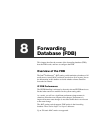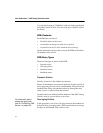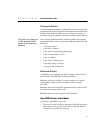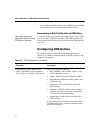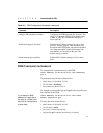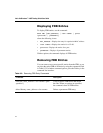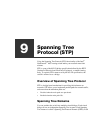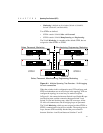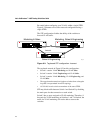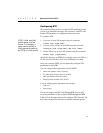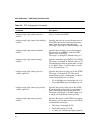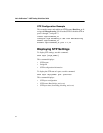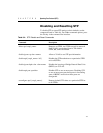
126
Intel
®
NetStructure™ 480T Routing Switch User Guide
STPD has its own Root Bridge and active path. After the STPD is
created, you can assign one or more VLANs to it.
A port can belong to only one STPD. If a port is a member of
multiple VLANs, then all those VLANs must belong to the same
STPD.
Remember these key points when configuring VLANs and STP:
• Each VLAN forms an independent broadcast domain.
• STP blocks paths to create a loop-free environment.
• When STP blocks a path, no data can be transmitted or received
on the blocked port.
• Within any given STPD, all member VLANs use the same
spanning tree.
Be sure that multiple STPD instances within a single switch do not
see each other in the same broadcast domain. This could happen if,
for example, another external bridge is used to connect VLANs
belonging to separate STPDs.
If you delete an STPD, the VLANs that were members of that STPD
are also deleted. You must remove all VLANs associated with the
STP before deleting the STPD.
In order for the switch to pass bridge protocol data units (BPDUs),
with spanning tree disabled, a protocol filter of any must be
associated with a VLAN on a port connected to the spanning tree
domain. Otherwise when STP is off, BPDUs will not be flooded to
adjacent bridges.
STP Configurations
When you assign VLANs to an STPD, pay careful attention to the
STP configuration and its effect on the forwarding of VLAN traffic.
Figure 9.1 illustrates a
network that uses VLAN
tagging for trunk
connections.
Five VLANs have been defined:
• Sales is defined on Switch A, Switch B, and Switch M.
•
Personnel is defined on Switch A, Switch B, and Switch M.
•
Manufacturing is defined on Switch Y, Switch Z, and Switch M.
•
Engineering is defined on Switch Y, Switch Z, and Switch M.




